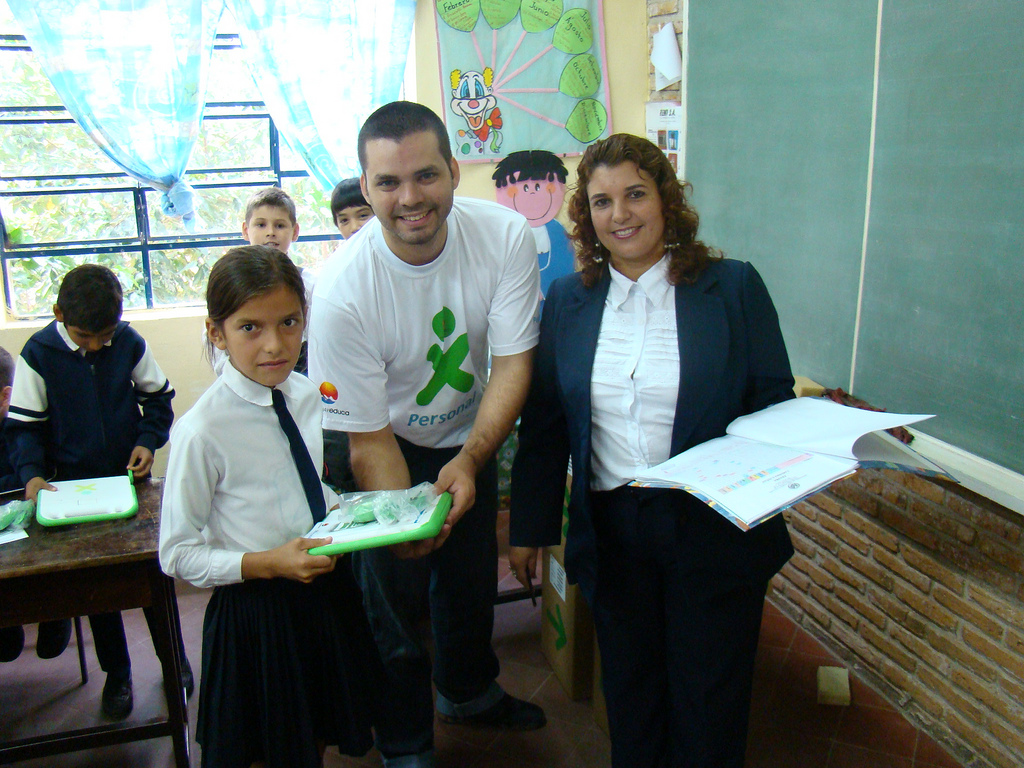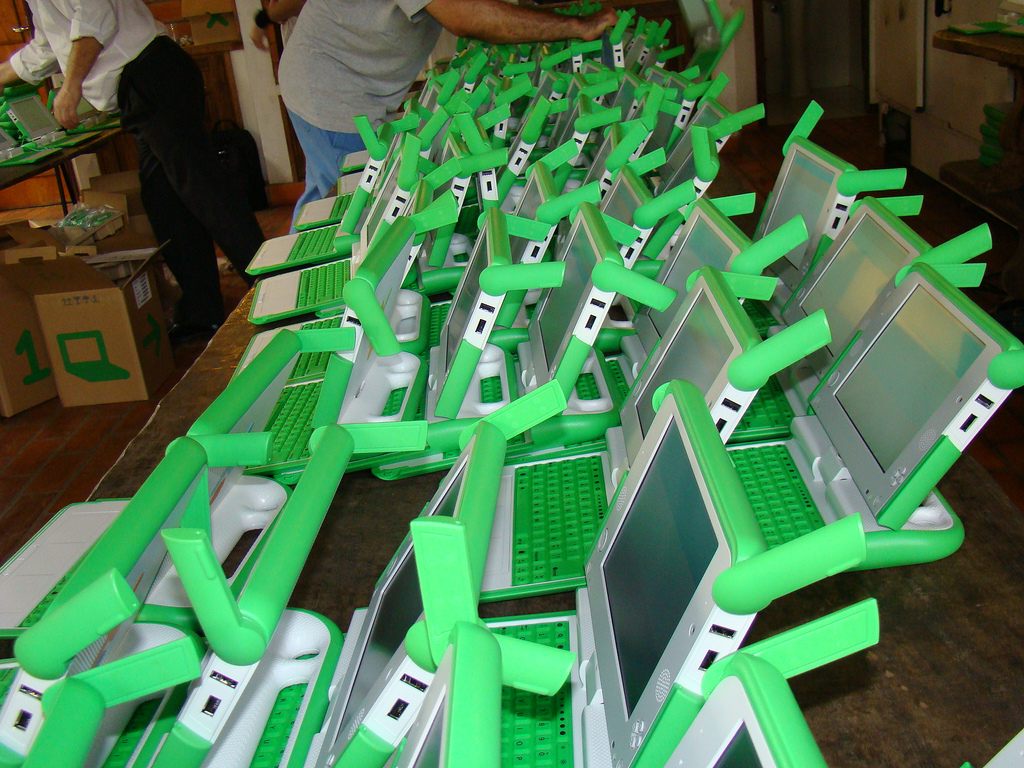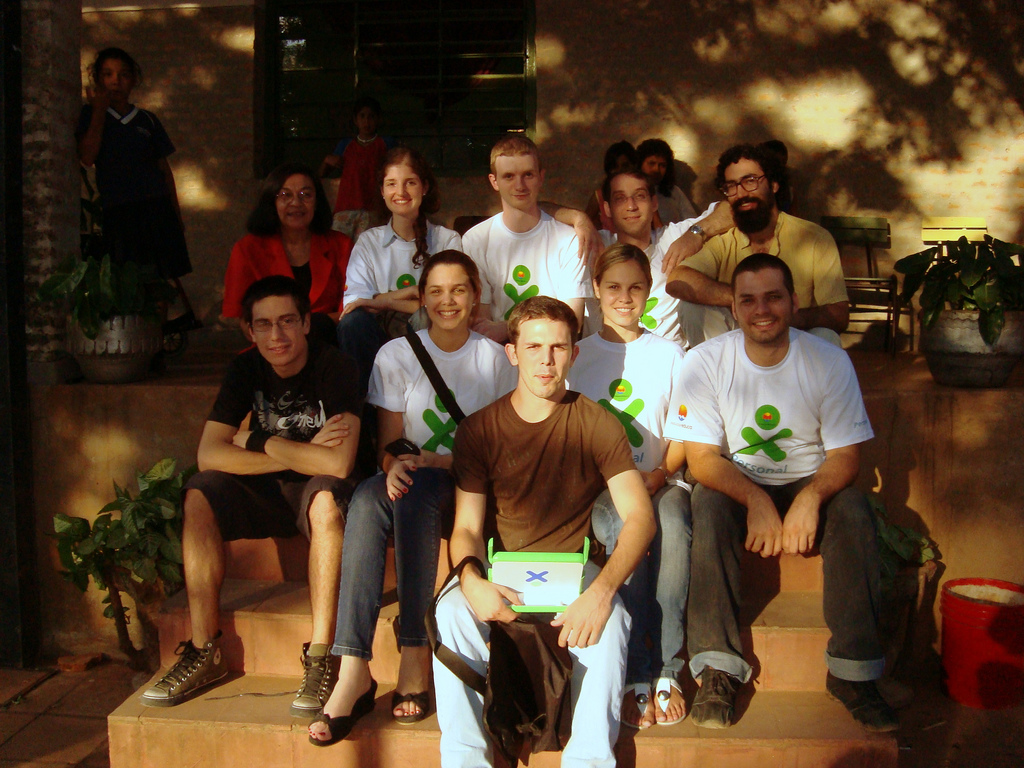Lessons from Paraguay 
Handing a XO to to a Child in a Classroom is only the Beginning
It's the reward after a lot of planning and months of work. In Paraguay one of the first steps was to obtain a National ID's (legally recognized names) for each child. Normally this does not happen until much later in the student's career.
In Paraguay, as small part of the larger task of identifying, tracking owners, and managing XO's, the planners decided to add a second label with the student's name in addition to the barcoded serial number in the battery cavity. (The serial number is also stored in the memory of the XO.) Even in smaller deployments, planners should think about how to uniquely identify students and keep the records to identify the laptop owners.
Dealing with Quantities
Adding a label with the student's name is just a small part of the initial tasks. Though simple in concept adding labels can be a daunting. Below is a picture of the process.

Updating the software is another critical task. Whenever there is a new release of the software, the XO's that have already been produced need to be upgraded to the latest software version.
In the Paraguay deployment, the planners added changes to the OLPC released software. The XO "nand blaster" designed to make classroom deployments easier is shown in use here updating the computer programs on all of the XOs at the same time.
Connection to the Internet
The planners in Paraguay were fortunate to have internet availability in most of the schools. But this is a topic that will require attention in even the smallest deployment.
Teacher Training
Do teachers know all they need to use XO's in the classrooms, and answer all the inevitable questions? In Paraguay, there was an extensive effort to identify critical skills and to pass them on to classroom teachers. Teachers need to learn about the Sugar desktop and the Activities which come loaded from the factory.

Student and Community Outreach
Then there's the need to prepare the ground with parents, and students. In Paraguay, there were extensive efforts to involve the community, with speeches, celebrations, and school wide gatherings to explain to families how to take advantage of this new tool.Origins of the Paraguay Deployment
The Paraguayan project started in 2007 when a university class ran a pilot project in the local community. This was a success and spurred interest from others. In 2008, an official Paraguayan non-governmental organization was created. It received donations to fund the project, and obtained permission from the government to enter the schools to implement the project. Effective media outreach resulted in the project typically being mentioned in the major national newspapers several times a week, including frequent front-page stories and editorial publications.

How is an XO deployment like an Iceberg?
There is a lot of invisible preparation required for a successful deployment. This preparation, if it requires facilities, network infrastructure, or technical expertise, can more than double the cost of a small project. How much of this can be done by dedicated volunteers? Networking and community building skills will help take advantage of local resources and lower the overall costs.





